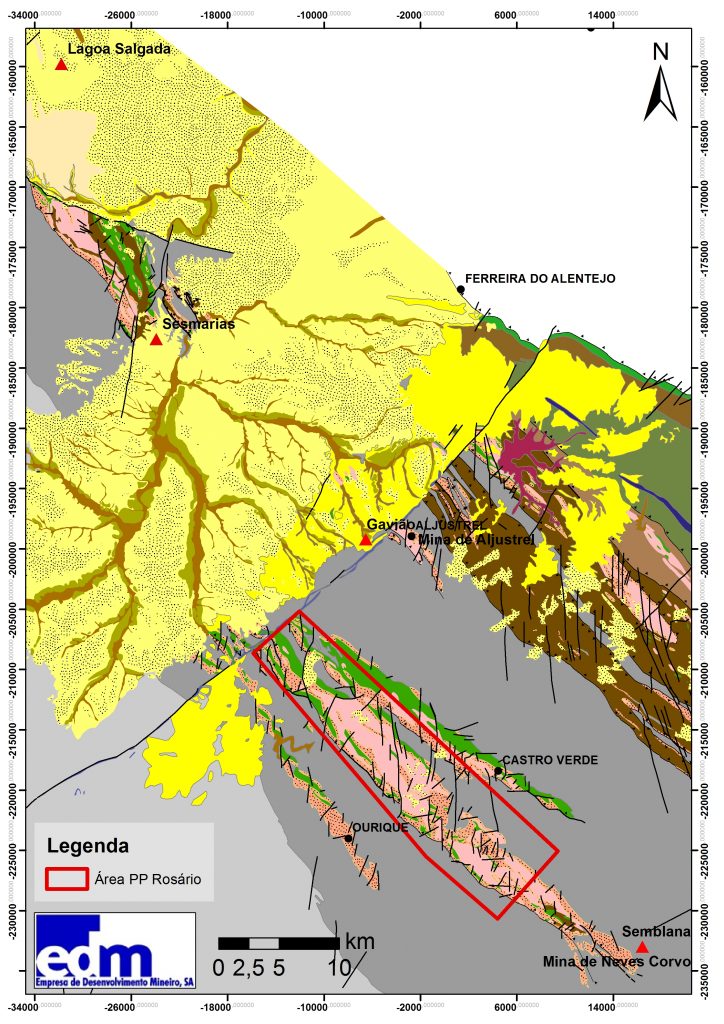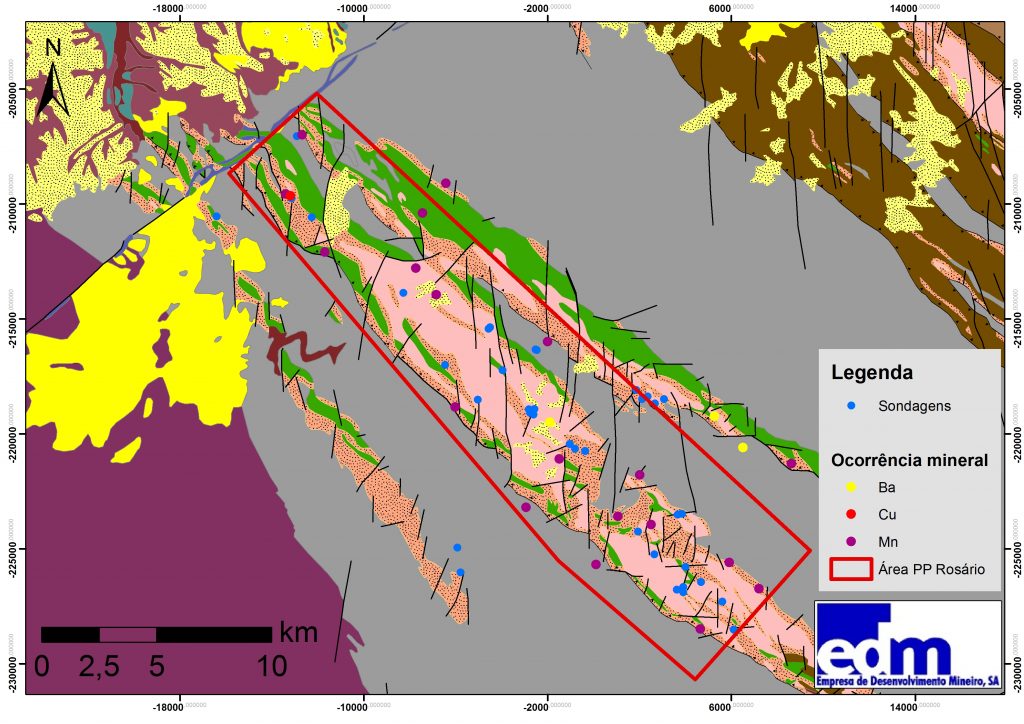The IPB is one of the most important metallogenetic provinces in the world for deposits of base metal massive sulphides associated with volcanic and sedimentary rocks, extending between Grândola and Seville, along a strip around 250 Km long and 60 km wide, which equals an area of approximately 12,500 Km2.
The Rosário area is located in the central sector of the Iberian Pyrite Belt (IPB) and covers much of the antiform of Rosário, where the main geological units of this metallogenic province occur. The main geological units present in the Rosário antiform are:
- The Phyllite-Quartzitic Group (PQ), aged between the Lower Givetian and the Upper Famennian periods, consisting of phyllites, siltstones, quartzites and quartz wackes;
- Volcano-Sedimentary Complex (VSC), of the Upper Famennian/Upper Visean periods. This complex predominantly consists of basic and in fewer number, intermediate, acidic volcanic rocks, interspersed in a sedimentary sequence of varying composition composed mainly of pelitic schists of various colours, siliceous shale, siltstones, jaspers and cherts. The Rosário area mainly consists of VSC rocks;
- Turbiditic sediments with flysch-type facies (shale, greywacke and some conglomerates) several kilometres thick, which make up the Baixo Alentejo Flysch Group (BAFG), were deposited on the VSC, represented in this area by the Mértola formation from the Visean-Upper Serpukhovian period.
The Varisco regional folding deformed this sequence, generating an antiform in a NW-SE direction with an axis tilting to the SE and vergency to the SW. This folding is also responsible for the development of overthrust with vergency to the SW which are responsible for the nesting and stacking of geological units, which leads to repetition of the lithostratigraphic sequence.
Recent studies indicate that the lithostratigraphic sequence present in the Rosário area is equivalent and correlative to the one identified at the Neves Corvo mine. Volcanic and schistous units were recognized in the Rosário with an age and characteristics similar to those occurring in the mine and which are associated with the mineralization. A transport of sediment load was also identified that may be correlated to the Neves Corvo transport of sediment load. This transport of sediment load is particularly important because in the mine it corresponds to the soil layer below which mineralization occurs.
In the Rosário area, near the NW edge, is located the mineralization of massive sulphides of Montinho, which is characterized by the occurrence of various small masses and was mined in the first half of the twentieth century. Close to the contact point of the VSC with the Mértola formation and within the VSC dozens of manganese occurrences are known hosted in the layer of purple-red tuffaceous schist and jaspers. Many of these occurrences have been explored in the past, in particular the Ferragudo and Filipeja mines due to their size. Some mineralizations of Barium in late Variscan faults are known that may have associated lead mineralizations. These faults may also be carriers of copper mineralizations.




